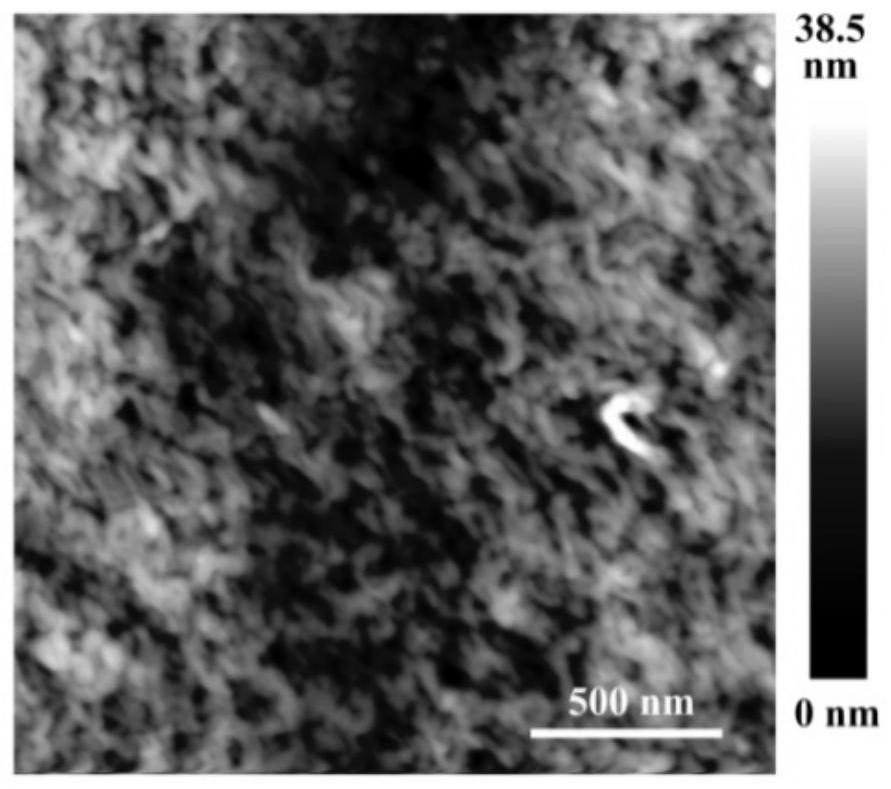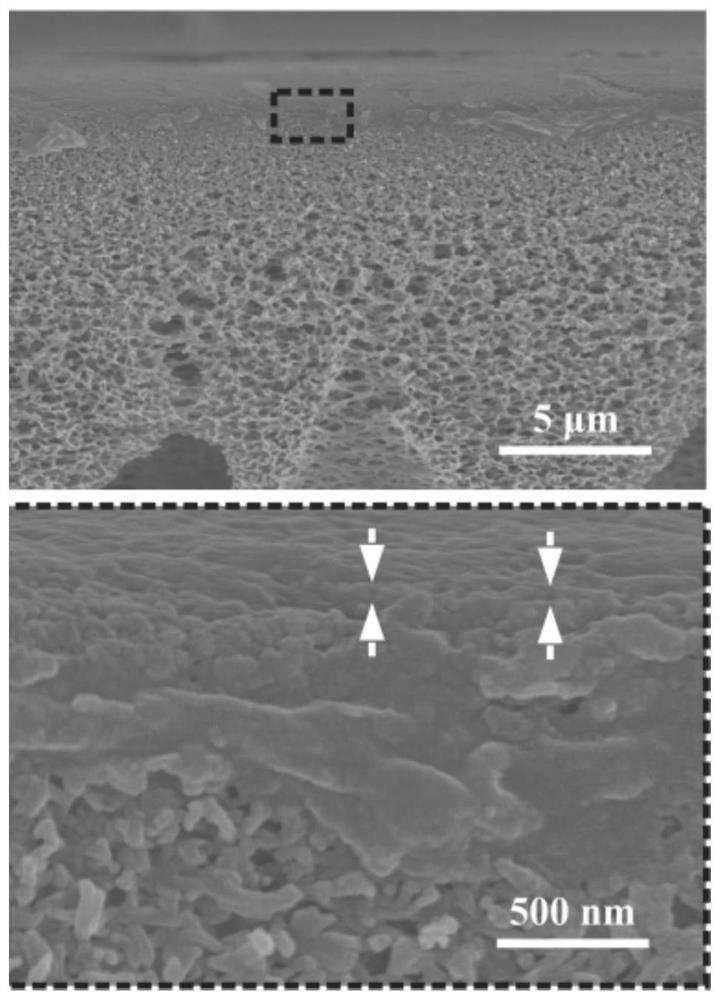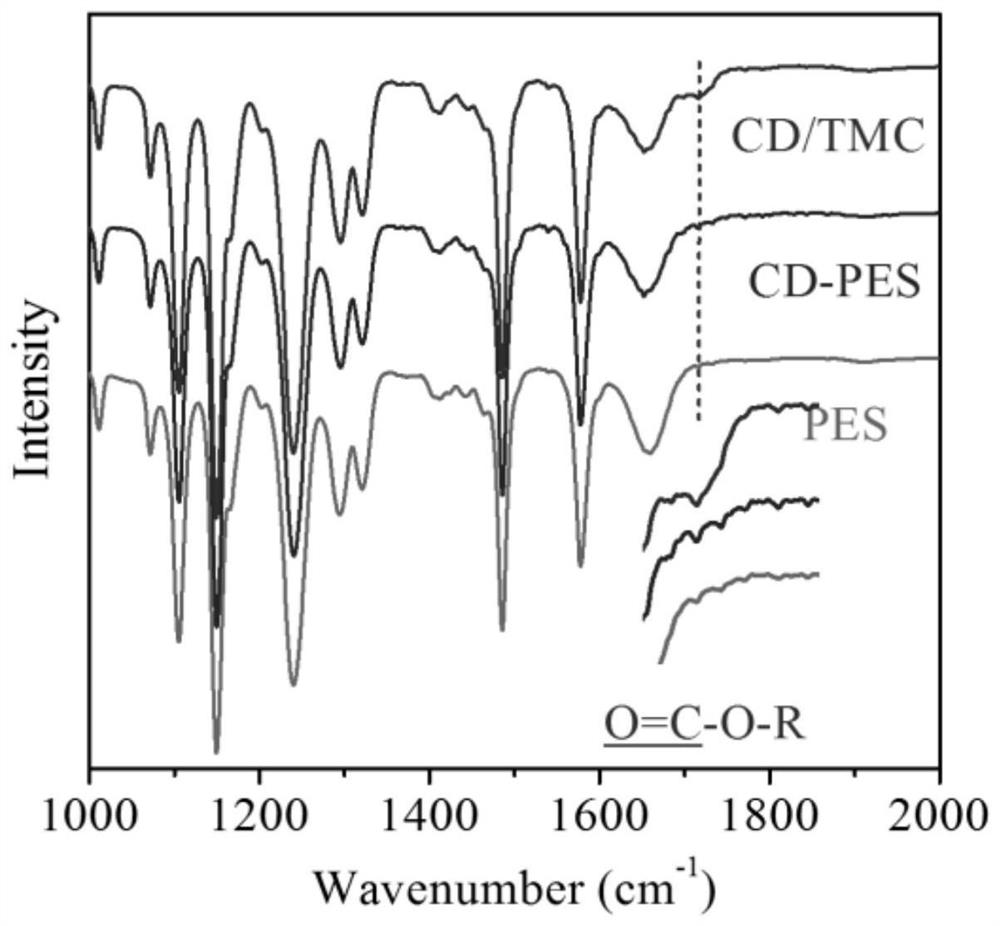Method for preparing polyester film through gas phase polymerization, polyester film and application
A gas-phase polymerization, polyester membrane technology, applied in the field of polymer chemistry, can solve the problems of increasing the production cost of composite membranes, harmful to the environment, etc., and achieve the effects of excellent separation performance, good stability, and wide versatility
- Summary
- Abstract
- Description
- Claims
- Application Information
AI Technical Summary
Problems solved by technology
Method used
Image
Examples
Embodiment 1
[0043] The substrate is polyethersulfone flat membrane (225cm 2 ).
[0044] Preparation:
[0045] (1) Preparation of substrates containing polyhydroxy monomers:
[0046] Add 0.2 g of polyhydroxy monomer β-cyclodextrin (β-CD) monomer and 0.08 g of sodium hydroxide into 20 mL of deionized water, stir and disperse, and obtain a β-cyclodextrin solution after fully dissolving. The β-cyclodextrin solution was evenly coated on the surface of the substrate, and dried at 80° C. to obtain a substrate containing polyhydroxy monomer β-cyclodextrin (β-CD).
[0047] (2) Gas phase polymerization prepares polyester film:
[0048] Put 0.2g trimesoyl chloride (TMC) into the bottom of the container, put the substrate containing β-cyclodextrin (β-CD) prepared in step (1) into the container, and put the substrate containing β-cyclodextrin (β-CD) into the container. ) does not come into direct contact with trimesoyl chloride (TMC). The reaction vessel was sealed and heated at 50° C. to vaporiz...
Embodiment 2
[0051] The substrate is polyethersulfone flat membrane (225cm 2 ).
[0052] Preparation:
[0053] (1) Preparation of substrates containing polyhydroxy monomers:
[0054] Add 0.4 g of polyhydroxy monomer α-cyclodextrin (α-CD) and 0.08 g of sodium hydroxide into 20 mL of deionized water, stir and disperse, and fully dissolve to obtain α-cyclodextrin solution. The β-cyclodextrin solution was evenly coated on the surface of the substrate, and dried at 60° C. to obtain a substrate containing polyhydroxy monomer α-cyclodextrin (α-CD).
[0055] (2) Gas phase polymerization prepares polyester film:
[0056] Put 0.5g terephthaloyl chloride (TPC) into the bottom of the container, put the substrate containing α-cyclodextrin (α-CD) prepared in step (1) into the container, α-cyclodextrin (α-CD) CD) does not come into direct contact with terephthaloyl chloride (TPC). The reaction vessel was sealed and heated at 100° C. to vaporize the monomer terephthaloyl chloride (TPC) for gas-phase ...
Embodiment 3
[0058] The substrate is polysulfone flat membrane (225cm 2 ).
[0059] Preparation:
[0060] (1) Preparation of substrates containing polyhydroxy monomers:
[0061] Add 1 g of polyhydroxy monomer γ-cyclodextrin (γ-CD) and 0.1 g of sodium hydroxide into 10 mL of methanol and stir to disperse. After fully dissolving, a γ-cyclodextrin solution is obtained. The γ-cyclodextrin solution was evenly coated on the surface of the substrate, and dried at 60° C. to obtain a substrate containing polyhydroxy monomer γ-cyclodextrin (γ-CD).
[0062] (2) Gas phase polymerization prepares polyester film:
[0063] Put 1g of malonyl chloride into the bottom of the container, put the substrate containing γ-cyclodextrin (γ-CD) prepared in step (1) into the container, γ-cyclodextrin (γ-CD) and propane Acid chlorides do not come into direct contact. The reaction vessel was sealed and heated at 70°C to vaporize the monomer malonyl chloride, and the gas phase polymerization reaction was carried ou...
PUM
 Login to View More
Login to View More Abstract
Description
Claims
Application Information
 Login to View More
Login to View More - R&D
- Intellectual Property
- Life Sciences
- Materials
- Tech Scout
- Unparalleled Data Quality
- Higher Quality Content
- 60% Fewer Hallucinations
Browse by: Latest US Patents, China's latest patents, Technical Efficacy Thesaurus, Application Domain, Technology Topic, Popular Technical Reports.
© 2025 PatSnap. All rights reserved.Legal|Privacy policy|Modern Slavery Act Transparency Statement|Sitemap|About US| Contact US: help@patsnap.com



